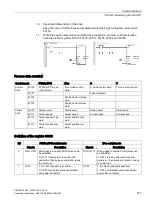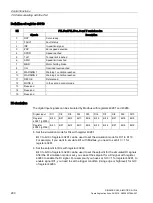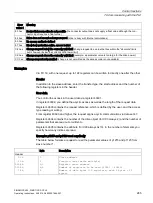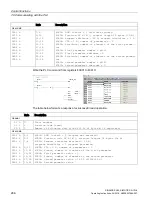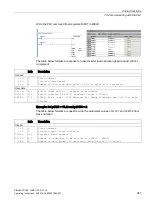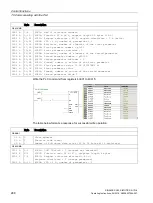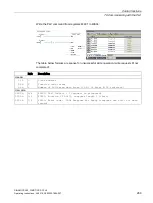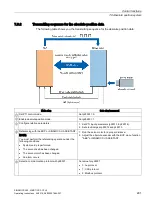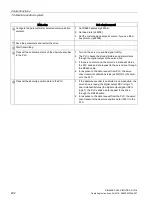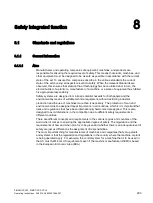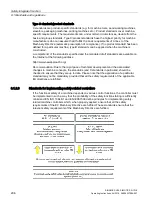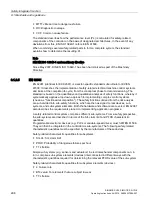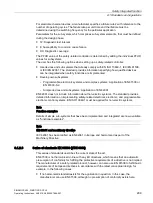
Control functions
7.8 Communicating with the PLC
SINAMICS V90, SIMOTICS S-1FL6
Operating Instructions, 04/2019, A5E36037884-007
285
Error
value 1
Meaning
83 hex
Desired interconnection is not possible (the connector output does not supply a float value although the con-
nector input requires a float value)
84 hex
Drive does not accept a change request (drive is busy with internal calculations)
85 hex
No access methods defined
87 hex
Know-how protection active, access locked
C8 hex
Change request below the currently valid limit (change request to a value that lies within the "absolute" limits,
but is however below the currently valid lower limit)
C9 hex
Change request above the currently valid limit (example: a parameter value is too large for the drive power)
CC hex Change request not permitted (change is not permitted as the access code is not available)
Examples
Via FC 16, with one request, up to 122 registers can be written to directly one after the other.
Header
In addition to the slave address, enter the transfer type, the start address and the number of
the following registers in the header.
User data
You control the access in the user data via register 40601.
In register 40602, you define the acyclic access as well as the length of the request data.
Register 40603 contains the request reference, which is defined by the user, and the access
type reading or writing.
From register 40603 and higher, the request aligns acyclic communication via data set 47.
Register 40604 contains the number of the drive object (for V90 always 2) and the number of
parameters that are read out or written to.
Register 40605 contains the attribute (for V90 always 0x10). In the number of elements you
specify how many indices are read.
Example: p1215 and p1120 read acyclically
The table below formats a request to read the parameter values of p1215 and p1120 from
slave number 1.
Byte
Description
Header
01 h
10 h
0258 h
000A h
14 h
0
1
2,3
4,5
6
Slave address
Function code (write multiple)
Register start address
Number of registers to be read (40601 … 40610)
Number of data bytes (10 registers, each 2 bytes = 20
bytes)







